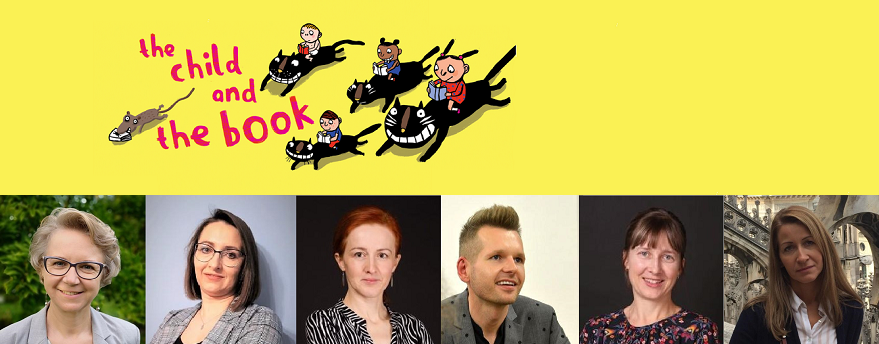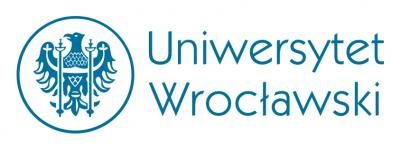Six members of the CENTRE FOR RESEARCH ON CHILDREN’S AND YOUNG ADULT LITERATURE participated in The 15th International Child and the Book Conference “Transformation and Continuity: Political and Cultural Changes in Children’s Literature from the Past Century to the Present Day” held online from 24-26 March 2021. The conference was co-organized by the Freie Universität Berlin and Humboldt-Universität zu Berlin and Eberhard Karls Universität Tübingen and was hosted by the Freie Universität Berlin.

More about the conference: https://www.cbc2020.org/index.html
Below are the topics and abstracts of the presentations:
Katarzyna Biernacka-Licznar, Natalia Paprocka
FROM OUTSIDE THE IRON CURTAIN: CENSORSHIP AND TRANSLATIONS OF WESTERN CHILDREN’S AND YOUNG- ADULT LITERATURE IN PEOPLE’S POLAND UNDER STALINISM (1948–1956)
The impact of censorship on translations of children’s and young adult literature has been studied rather cursorily so far (see e.g. Thomson Wohlgemuth 2009; Inggs 2011; Pokorn 2012). Some of the research has focused on censorship in the USSR-dominated Poland (see e.g. Rogoż 2013; Looby 2015). In the period which was and still is colloquially and ideologically referred to as People’s Poland, children’s and young adult literature was strictly monitored, as reported by Tomasz Strzyżewski, a Cracow-based censor who fled Poland in 1977 and revealed the mechanisms and practices of censorship. In an interview, Strzyżewski emphasised that there was a gradation of social groups in terms of the urgency of censorial interventions. “Children and youths”, he said, “must not be exposed to any doubts”. Such control was particularly strict in the case of translations of literature imported from capitalist countries, which were considered ideologically hostile. Our paper aims to depict the influence of the Central Office for the Control of the Press, Publications and Performances (Główny Urząd Kontroli Prasy, Publikacji i Widowisk) on the editorial policies of publishers of translated children’s and young adult literature and on the translations themselves in the earliest (Stalinist) period of People’s Poland (1945–1956). Our exploration is based on censorial reviews collected at the Central Archives of Modern Records (Archiwum Akt Nowych) in Warsaw and on the selected literary texts that these reviews analysed. Our research unfolds in the following way: (1) First, we describe the foundation and operations of the censorship agency in People’s Poland; (2) then, we discuss the censorial review as a type of text; (3) subsequently, against this backdrop, we present and examine examples of censorial reviews of translated children’s and young adult literature.
Bożena Hojka, Elżbieta Jamróz-Stolarska
NASZA KSIĘGARNIA – 100 YEARS OF CONTINUITY IN PUBLISHING BOOKS FOR CHILDREN
Nasza Księgarnia publishing house was established in 1921 and continued its activity even during World War II (Rogoż 2008, 2010). After 1945 it was transformed into a state publisher of children’s literature and played an important role in the Polish publishing market. It was a huge publishing company that employed a lot of specialists (i.e. editors, authors, illustrators) and published about 300-400 children’s books a year in very high print runs (Pół wieku przyjaźni z dzieckiem i szkołą 1921–1971 1972; Kitrasiewicz, Gołębiewski 2005). The radical change in the situation after 1989, the release of the market and the profound social, ideological and cultural changes connected with this breakthrough became a challenge for the entire Polish publishing market, which after several years of serious crisis under-went a decisive transformation. Some of the state publishing houses have been privatized, among them Nasza Księgarnia (Tobera, Klukowski 2013). Almost a century of existence of the publishing house allows us to treat it as an example of a publisher who skillfully and effectively adapted to the changing political, economic and cultural realities, at the same time preserving its own identity and continuing a specific tradition. The paper is an attempt to analyse the model and strategy that allowed Nasza Księgarnia to survive this difficult period, without, however, dissociating itself from previous achievements. A theoretical model by Michael Bhaskar (Bhaskar 2013) will be used as a methodological basis. The activity of Nasza Księgarnia will be analysed in the context of the key concepts of model, framing, filtering and amplification. Hans Heino-Ewers’ model of children‘s literary communication (Heino-Ewers 2009) will allow us to focus on the specific role of Nasza Księgarnia as a publisher for children and young people. Thanks to this, the influence of changes taking place in political and social life in Poland at the turn of the 20th and 21st centuries on the evolution of the publishing repertoire and the editorial form of children‘s books will be exposed.
Irena Barbara Kalla
TRANSFORMATIONS OF THE “PEDAGOGY OF REMEMBERING”. DUTCH AND FLEMISH CHILDREN’S LITERATURE OF THE PAST TWO DECADES ABOUT THE HOLOCAUST
Since the 1970s, the number of children‘s books about World War II and the Holocaust has been growing systematically. From a pedagogical point of view, there is still a strong urge to remember the horror and to warn of the consequences of dehumanising discrimination and totalitarian systems. (Vloeberghs 2008: 172-174). The past two decades have seen a growing proliferation and generic (intermedial) diversifaction of Holocaust-related fiction and non-fiction in the Dutch language. At the hands of authors who usually do not have a personal or familial connection with the Holocaust, genres as diverse as the historical novel, thrillers, picture books, the graphic novel, and comic books have become the platform for a creative engagement with the Shoah. In view of the growing temporal distance separating contemporary readers from the actual events of the Holocaust children’s literature saw its informative function being rein-forced and revaluated. A case in point is the prolific cultural policy of the Anne Frank Foundation, which has initiated – in close collaboration with various kinds of public and private actors – a series of new publications inspired by the Anne Frank diary. In my presentation I will review Dutch and Flemish children’s literature about the Holocaust created in the 21st century. I will pay special attention to the literary methods and interventions used by authors of books in which the Holocaust is represented. In the context of memory studies (Assman 2008; 2010; Hirsch, 2001) I will examine the transformations of “pedagogy of remembering” (Vloeberghs 2005) in recent children’s books in the Dutch language.
Mateusz Świetlicki
MEMORY, POST-MEMORY, OR COUNTER- HISTORY? GABRIELE GOLDSTONE’S AND MARSHA FORCHUK SKRYPUCH’S FICTION FOR YOUNG READERS
While some historical children’s novels written by Canadian authors of Eastern European heritage have enjoyed substantial commercial success and received critical recognition in North America, works by other writers have had little attention from readers, librarians, and children’s literature scholars. In most of their novels, Ukrainian-Canadian authors heavily depend on historical sources, witnesses and family memory, often focusing on their parents’, grandparents’, and great-grandparents’ traumatic experiences during WWI, The Great Terror, WWII, and the three waves of migration to Canada. In this presentation, I want to compare Marsha Forchuk Skrypuch’s popular Ukrainian- themed WWII series with Gabrielle Goldstone‘s Red Stone (originally published as The Kulak’s Daughter) and Broken Stone, novels about young kulaks and the Great Terror in Ukraine. Using Werner Sollors’s words, “What is called ‘memory’ (Nora‘s lieux de mémoire) may become a form of counterhistory that challenges the false generalisations in exclusionary ‘History’” (qtd in Klein), I want to argue that telling the repressed, untold stories brings attention to the second-generation memory of the traumatic experiences of Canadians of Eastern European heritage. The aforementioned authors attempt not only to work through their family trauma for their own benefit but also put it on the lands-cape of Canadian collective and cultural memory. While Skrypuch is succeeding, as her books remain popular in most school libraries, available in English and French, and generating a significant fan following online, Goldstone has fallen into obscurity, and her works, despite their high literary value, are out-of-print and difficult to find in libraries. Analysing and comparing the narrative techniques and plotline devices used by both authors, I will discuss the reasons behind the different reader responses generated by their respective texts. Finally, I will address the likelihood of children‘s literature be-coming the source of prosthetic memory for young North American readers outside of the diaspora.
